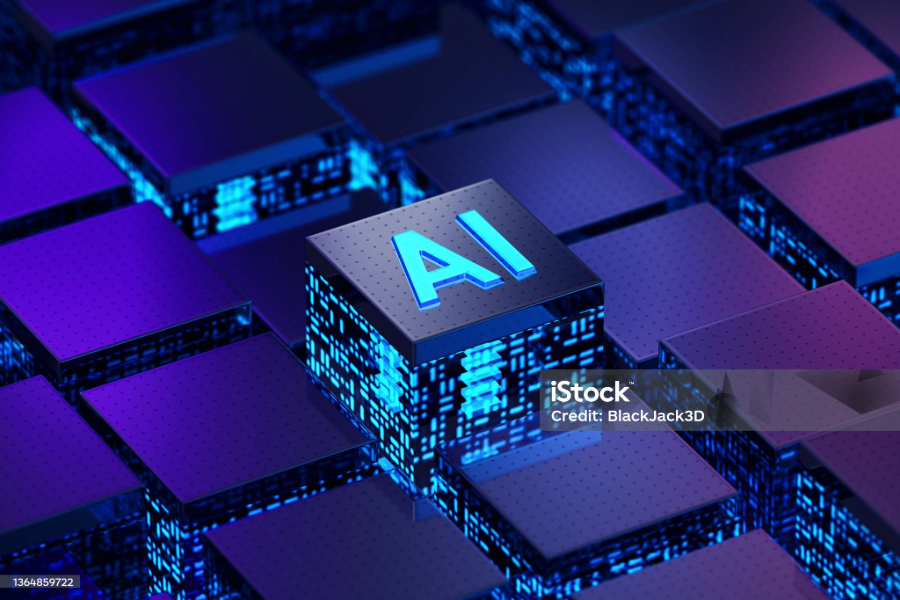AI Testing
In the span of only a few months, AI has reshaped the landscape of almost every industry around the world in both positive and negative ways. Indeed, there is still a lot of room for improvement for this groundbreaking technology, but if businesses don’t embrace it, they’re sure to be left behind. In the QA industry, “AI testing” will become the norm in the next few years, bringing incredible advancements in the way we think and do software testing.
In this article, we’ll explore the concept of AI testing in-depth, see how AI can optimize testing, and share the pioneering AI testing tools that you can leverage to transform your QA workflows.
Before diving into the concept of AI testing, we must first have a common understanding of Artificial Intelligence (AI). AI has become a buzzword recently after the introduction of ChatGPT – a revolutionizing chatbot. So, what is AI?
AI can be defined as the simulation of human intelligence via machines that are programmed to perform tasks that require advanced cognitive abilities, such as data analysis, decision-making, learning, and adapting to new information. In a way, basic programming can only instruct computers to strictly perform a limited set of tasks, whereas AI systems have a certain degree of autonomy to them.
What is AI Testing?
AI testing is the process of evaluating the functionality, performance, and reliability of a system with the help of AI. It still involves the same core techniques used in traditional software testing, but these techniques have been drastically improved by AI technology.
AI testing can also be understood as testing for AI-based systems, or “testing for AI”. These AI systems incorporate various AI techniques, including machine learning, natural language processing (NLP), computer vision, deep learning, and expert systems, to process a tremendous amount of data to recognize patterns and make intelligent decisions.
Testing AI systems is similar to testing any other systems, and involves a six-step process from requirement analysis to test cycle closure. The major difference is that AI systems tend to also display extremely complex, diverse, and highly probabilistic behaviours.
Application of Using AI for Testing
- AI Enables Faster and Smarter Test Creation
AI can help QA testers generate test scripts both more quickly and intelligently. Usually these automated test scripts must be developed by a tester with engineering expertise using a test automation framework like Selenium; after that they have to be continuously maintained as changes are made to the source code. However, we can now provide a prompt in plain language that instructs the AI to create a test for a specific scenario, and it’ll write one in just seconds for you.
- AI Can Quickly Generate Test Data for Data-Driven Testing
In certain cases, to test comprehensively you would need a large volume of data, or a huge number of data combination inputs.
- AI Makes Test Maintenance Effortless
Software and websites are updated all the time, especially in organizations that employ the Agile testing methodology. Test scripts written to test an element can quickly fail when the code is updated. For example, if we wrote a test to click on a button with the ID “login-button,” changing this ID for any reason will cause the test to fail. Having to update a large number of test cases every time code changes occur (quite frequently) is a time-consuming process.
- AI Enhances Visual Testing
Visual testing used to be quite a formidable task as human testers have to use their own eyes to spot visual differences between the UI-before-deployment and the UI-after-deployment. Visual testing tools can indeed identify visual changes better, but they can’t distinguish changes that affect the users and changes that do not. AI-powered visual testing tools, on the other hand, take that into consideration, and therefore can identify bugs more accurately.
AI-Powered Tools for AI Testing
The following software testing tools pioneer the AI testing trend and incorporate AI technologies into their systems to bring software testing to the next level. More than simply a tool to create and automate testing, they also perform intelligent tasks that in the past would have required a human tester.
- Katalon Platform
Katalon is an AI-powered testing platform with many AI features, including:
- StudioAssist: Leverages ChatGPT to autonomously generate test scripts from a plain language input and quickly explains test scripts for all stakeholders to understand.
- TestCraft
TestCraft is an AI-powered test automation platform that revolutionizes regression and constant testing by leveraging the power of Selenium and offering comprehensive web application monitoring capabilities.
- Applitools
Applitools is a software that manages visual applications and employs visual AI for AI-powered visual UI testing and monitoring. The incorporated AI and machine learning algorithms are fully adaptive, enabling it to scan and analyze app screens like the human eye and brain, but with the capabilities of a machine.
- Testim Automate
Testim Automate is a test automation platform that uses machine learning to address two recurring challenges in software testing: slow test creation and extensive test maintenance. With Testim, individuals without coding skills can swiftly generate end-to-end tests using its recording functions. Engineers can also utilize code to expand on these capabilities, combining the best of both approaches.
Conclusion
ChatGPT is undoubtedly shaking up the AI world, and the tremendous advantages it can bring to software testers can’t be ignored. However, the trick to using ChatGPT is to master prompt engineering, and at a higher level, problem decomposition. With certain testing bottlenecks, we can now consider how a tool like ChatGPT can assist us, and then come up with a methodological solution that can be converted into a prompt.
Source
- https://www.istqb.org/certifications/artificial-inteligence-tester
- https://www.bitsathy.ac.in/blog/exploring-the-innovations-of-dall-e-3/

